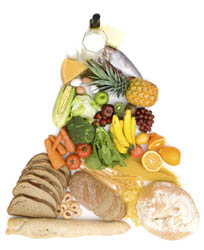Modelling food structure
The development of generic food models that mimic food structure would be greatly beneficial for scientists in assessing the effect of composition changes or of processing conditions on the nutritional and health properties of foods. Furthermore, such models could be used extensively by the food industry for the optimisation of production processes. Aiming to make these food models a reality, the EU-funded DREAM project has brought together a multidisciplinary team of food experts including industrial partners and food industry organisations. The consortium set out to categorise foods into four groups based on their structure: cellulose-based (fruit and vegetables); protein-based (meat); combined gelled, dispersed and aerated systems (dairy products such as yogurts, creams and cheeses); and solid foam (cereal products such as bread). By using well characterised, realistic food models, partners aim to translate the research results to mathematical models that can simulate food structure numerically as well as the effect of thermal processes on food or nutrient composition. The 'filled cellular solid model' for fruits and vegetables has been based on different varieties of tomato, apple and brassica. Information on the effect of processing of tomato to puree or of brassica boiling on cell lysis and nutrient content has been incorporated alongside microstructure and nutrient content data. Researchers used nuclear magnetic resonance (NMR) relaxometry and other spectroscopy methods to obtain this data. Similarly, for the 'proteinous cellular network model', proposed models have been designed to evaluate the protein changes induced by heating and to assess which physicochemical parameters are related to protein digestibility. Knowledge on the mechanisms involved in denaturation and oxidation of proteins during cooking has also been incorporated in this model. The consortium has based their dairy product model on a dairy dessert and a cream cheese model. Work on these models has enabled scientists to correlate the surface composition with both temperature and composition. With respect to the 'open solid foams model', various commercial sources of fibre (bread dough, bread and biscuits) have been tested, and testing protocols for rheology, thermal, porosity, colour and status of water have been designed and validated. DREAM's experimental food models are being assessed for their ability to estimate the bioavailability of nutrients, phytochemicals and toxicants, and for microbial food safety and quality. Using these tools, food industry stakeholders would be able to determine the nutritional consequences of food processing and adapt their methods to preserve food composition and structure.



